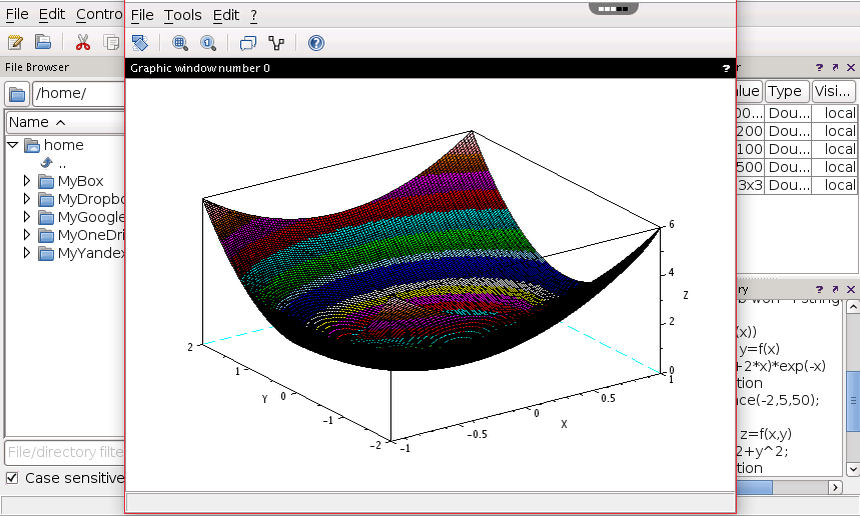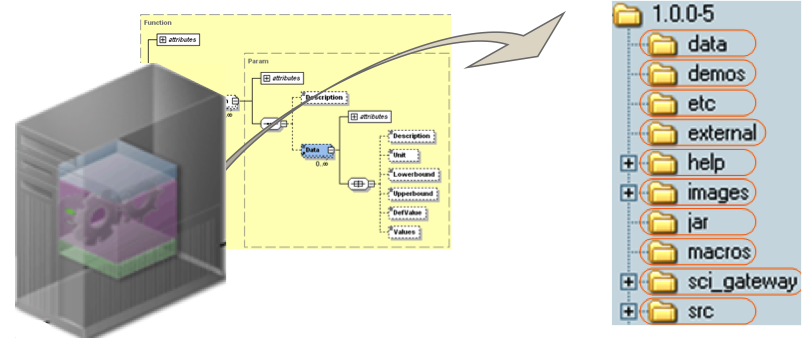

The Point Cloud Library (PCL) is an open-source library of algorithms for point cloud processing tasks and 3D geometry processing, such as that occur in three-dimensional computer vision. Team STH105: Point Cloud Library (PCL) Toolbox for Scilab A total of 42 teams completed the work in the allotted time of 2-3 weeks, as shown in the chart below.Ī brief write up on the Champion toolboxes is given below: Proposals from about 150 teams were considered to be suitable for toolbox development. More than 700 students and professionals from different parts of India expressed interest to participate in the Scilab Toolbox Hackathon, coordinated through. Eight toolboxes created through this hackathon are now available on the Atom page, mentioned above. The method proposed for the hackathon was validated by the FOSSEE team while building the Optimization Toolbox, created by calling the routines in the open source repository COIN-OR. These can also be located in Scilab's Atom page and searching by the phrase FOSSEE. The FOSSEE team has already created a few toolboxes, available through. As there are lots of extremely useful open source software, it should be possible to increase the number of toolboxes in Scilab through this activity. One of the shortcomings of Scilab is that it does not have an extensive collection of toolboxes. The reason to initiate this activity was to increase the number of toolboxes available in Scilab.
SCILAB ANIMATION SOFTWARE
The objective of this hackathon was to make available useful open source software as a toolbox within Scilab.
SCILAB ANIMATION CODE
For example, through Scilab Textbook Companion, available at, FOSSEE coordinated the work of about 1,000 students from about 500 colleges to produce Scilab code for 75,000 solved examples of 625 standard textbooks of science and engineering. The FOSSEE team has been actively promoting Scilab as an alternative to the extremely popular, but also very expensive (especially to the industry), software, Matlab. If you do not like the default color scheme, you can set up your own colors using the Color menu.FOSSEE, IIT Bombay (), conducted a Scilab Toolbox Hackathon in May-June 2020, just after the onset of the pandemic.
SCILAB ANIMATION DOWNLOAD
There is also an option to generate an animated GIF image of the current scene, for people who would like to download an animation e.g. It also contains an option to generate a to EMANIM with the current wave parameters preset so you can save it for yourself or for sharing it.
SCILAB ANIMATION FULL
The View menu contains a few predefined camera angles for easier viewing of the scene, and you can also switch to full screen mode. The scene can be rotated and zoomed (see Help menu to learn how). When a phenomenon is selected, a short explanation of it is displayed. Using the Phenomenon menu, you can select from several predefined sets of parameters corresponding to various electromagnetic phenomena. The rate of the animation can be set, and there is an option to only show the vectors at the planes without the wave profiles in between so that the movement of the vectors can be easier to compare. The length of this material as well as its extinction coefficients and indices of refraction for both waves can be adjusted using the controls. To study the interaction between light and matter, a piece of material can be inserted between the two planes. The directon of Wave 1 can be reversed, to study waves traveling in opposite directions. Using the controls, the amplitudes and wavelengths of the waves as well as their phase difference (the phase of Wave 2 relative to Wave 1) can be adjusted. The waves as they move forward are shown between two planes the electric field vectors are displayed at the planes. In EMANIM, you can set up two waves ( Wave 1 and Wave 2) with selectable polarization (horizontal, vertical, left circular or right circular) and you can show their superposition ( Wave 1 + Wave 2).



For clarity, only the electric component is shown at all times (the magnetic component is always perpendicular to the electric component and its magnitude oscillates in the same phase as that of the electric component). EMANIM animates electromagnetic waves in vacuum and in matter.


 0 kommentar(er)
0 kommentar(er)
